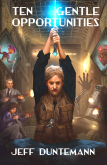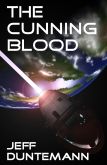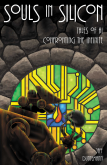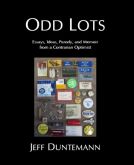- This (scary) item is the most significant I’ve seen recently: Microsoft is working on features that obsess with granting a Windows AI its own private workspace on your machine, plus access to your Documents, Downloads, Desktop, Videos, and Music folders. This will go nowhere good. Keep it in mind, and if MS asks for permission to enable this feature, weigh the consequences. MS admits the damned thing could install malware and have hallucinations. Huh. I won’t use a computer that thinks I‘m dead.
- There’s a cool group on Facebook called Old Radio Garage. Lots of pictures of tube-era radios, including a few on the bench being repaired, but not a lot of discussion.
- Speaking of radio, I (finally) took a closer look at AccuRadio, which is a free music streaming service that offers bits’n’pieces of almost everything musical. It takes a little study to find your preferences, but I was amazed at the breadth of coverage. You have to create a free account to avoid most commercials and have access to some features, but I think it’s worth the benefits.
- Google is evidently in the process of merging Android with ChromeOS into an OS called Aluminium. (No, I didn’t misspell that. It’s the British spelling.) The Aluminium OS will evidently have AI all over itself, inside and outside. Gosh, I just can’t wait to pass on it!
- We have AA, AAA, C, and D batteries. Why not B batteries? Reader’s Digest has a short-form explanation. What they don’t emphasize is that B batteries providing high-ish DC voltage to portable tube radios never had a standard size, not that I’ve ever heard of. I bought a 45-volt battery when I was 12 or 13 for a tube radio I was building, and it was like a long 9V battery, with the same power connectors, just more cells stacked up inside the rectangular case. I later saw all sorts of “B” batteries (most of them dead) in many shapes and voltages. Given the broad range of radios that would use it, a standard size and voltage would be impossible, which in truth explains all that needs explaining.
- Lazarus v4.4 is out. Built with Free Pascal 3.2.2. It’s a bugfix release, but hey, there’s no reason not be up to date. It’s worked great on my several Lazarus projects under Windows 11.
- I used to call Free Pascal FreePascal, but that’s no longer how the product’s creators spell it. Free Pascal it is. Sooner or later I’ll update FreePascal from Square One to reflect that spelling.
- And least but not last (ok. both least and last) Politico posted a gigantic, high-fat article about a crew called Stardust who want to make chemtrails real, in essence squirting air pollution back into the atmosphere to reflect sunlight and cool the planet. This is not a new idea, and not necessary, especially since Stardust refuses to say what the particulates they want to squirt into the atmosphere are made of. There is no climate crisis. Polluting the atmosphere with unknown crap is a scam. Don’t fall for it.
lazarus
Odd Lots
Odd Lots
- Here’s another hyperenergetic instrumental piece—with a short rest in the middle, granted—from Joseph Curiale, he of “Sky Blue After Rain.” It’s called “Double Happiness,” and it’s nutso optimistic, kinda like…me.
- Speaking of music, I remain and have always been puzzled why the purely orchestral works of Leroy Anderson are not considered “classical” and are not played on classical stations like our KBAQ. Some are quirky, like “The Typewriter,” but my all-time favorite Anderson composition, “Bugler’s Holiday,” which is really a manic trumpet concerto, somehow doesn’t qualify. Too fast? Hey, if “Sabre Dance” is considered classical, why not “Bugler’s Holiday”?
- Video generative AI is evidently getting so good that people are making bank–big bank–on slop AI videos, some that can’t easily be told from real videos. It’s more than a little scary. I don’t either make or consume video as a rule, but I would be interested in seeing a verifiably AI-written SF novel.
- Here’s another piece that nails why I think generative AI is scary. Watermarks? If an AI can make photorealistic videos, it can fake a watermark. Maybe something incorporating blockchain as is done with NFTs. I’m no expert on blockchain, but this intro to blockchain and NFTs sounds like it’s impossible to replicate an NFT—which suggests a way to prove that a video was not done with AI.
- In case you missed it: Lazarus 4.2 (Built with Free Pascal 3.2.2) was released on July 22. It’s a bugfix release, but hey, bugs are annoying and Lazarus is amazing. Take every release that happens and install it.
- I grew up in Illinois and have always been at least a little interested in monsters, so why did it take 73 years for me to ever hear of the Enfield Monster? Sure, Enfield is at the opposite end of Illinois from Chicago, a long way from anywhere, with all of 794 inhabitants—and only 764 when the monster came calling in 1973. I guess without Internet, even for an eccentric and boundlessly curious 21-year-old, some things just come and go unnoticed. By me, at least. It makes me wonder what other monsters I’ve never heard of.
- Ars Technica points out that it generally takes a garage with a high-current 240VAC outlet to charge an EV at home. And—wow, how could this be possible?—a great many Americans have garages so full of stuff that they have to park their cars outside. Yes, it’s possible; actually, the honest truth, as we see every time we drive around our neighborhood.
Lazarus 3.0 Has Arrived!
For all you Pascal programmers among my readers: Lazarus 3.0 is out, and available for free download. Here’s the announcement. I’ve already installed it on Win10 and will install it on Linux when time becomes available. (I’m still struggling to write the trademark Jeff Duntemann mayhem-filled action climax of my current WIP: The Everything Machine, the first full-length drumlins novel.)
Delphi now costs over $1000. If I’m going to teach Pascal, I can’t use Delphi, love it though I may–and do. Lazarus is pretty much Delphi’s peer, though it doesn’t…quite…have the third-party component aftermarket that Delphi has. Doesn’t matter. The fundamental principles of OOP and event-driven programming are the same.
For newcomers: Lazarus is a superb IDE and drag-‘n-drop GUI builder conceived as a Delphi competitor, though open-source and thus free of charge. It uses FreePascal 3.2.2 as its compiler. FreePascal understands Delphi’s additions to the Pascal programming language, and will also compile ancient Turbo Pascal programs. FreePascal is part of the Lazarus package and is installed when you install Lazarus. I have fragments of a book on Lazarus that I will return to at some point. But if you know Delphi, well, there’s not a lot more to learn. You’ll feel right at home.
Go get it. I’ve done a lot of work in Lazarus. It’s mature. It works. It can create wonderful GUI apps. And it’s free. What more do you want?
Odd Lots
- Lazarus 1.8.4 has been released. Bug-fix release but still worth having. Go get it!
- From the Questions-I-Never-Thought-to-Ask Department: How was sheet music written after quill pens but before computers? With a music typewriter, of course.
- How to become a morning person. Yes, there are benefits. The larger question of whether circadian orientation is born or made remains unanswered. Carol and I both lived at home during college. We’re both morning people. My sister and I had the same parents, grew up in the same house and obeyed the same rules (bedtimes were set from above and were not negotiable) and she went away to school. She is a night person. Proves nothing, but I find the correlation intriguing. (Thanks to Charlie Martin for the link.)
- Here’s a long-form, highly technical paper on why human exposure to low-level radiation is more complex than we thought (hey, what isn’t?) and that some data suggests a little radiation experienced over a long timeframe actually acts against mortality. I’d never heard of the Taiwan cobalt-60 incident, but yikes!
- Sleep, exercise, and a little wine may help the brain’s glymphatic system clean out unwanted amyloid waste products within the brain, preventing or staving off Alzheimer’s. This process may be the reason that anything with a brain sleeps, and why humans (who have more brain matter per pound than anything else I’m aware of) should get as much sleep as we can.
- An enormous study on the benefits of the Mediterranean diet was found to be profoundly flawed, and has been retracted. The data was supposedly re-analyzed and the original results obtained again, but if the researchers made the mistakes they did originally (assuming that they were in fact mistakes and not deliberate faking) I see no reason to trust any of their data, their people, or their methods ever again.
- How faddism, computerization, national bookstore ordering, a court case, and New York City cultural dominance destroyed (and continues to destroy) traditional publishing of genre fiction. The good news is that with indie publishing it matters far less than it otherwise would.
- If you’ve followed the nuclear energy industry for any significant amount of time, you know that fusion power is always 30 years in the future. Now, I’ve also been hearing about thorium reactors for almost 30 years, and I got to wondering why we don’t have them yet either. Here’s a good discussion on the problems with thorium power, which intersect heavily with the problems plaguing ordinary uranium reactors.
- Long-held myths die hard, especially when governments beat the drum for the myth. Eggs are good food. I eat at least two every day, sometimes more. The American Journal of Clinical Nutrition published a study indicating that people on a lots-of-eggs diet lost weight and suffered no cardiac consequences of any kind. Good short summary here.
- I don’t see a lot of movies, but I’m in for this one, crazy though the concept is. After all, spectacle is what the big screen and CGI are for. Mad Max meets Cities in Flight? Sold.
- The contrarian in me has long wondered how much of what I put out on the street every week in the recycle can is actually recycled. The answer is very little, especially since single-stream recycling became fashionable. Almost all of it goes into landfills. The reasons are complex (there’s not a lot you can do with scrap plastic, for example) but apart from aluminum cans, the cost of sorting it far exceeds the value of the reclaimed materials.
- The antivax movement has always boggled me for its indomitably willful stupidity. Having stumbled upon a research paper on who the antivaxers are I boggle further: They are almost all members of the educated elite in our urban cores. This was always a suspicion of mine, and now we have proof.
- Here’s a fascinating piece on the effects of water vapor and continental drift on global temperatures. The topic is complex, and the piece is long and rich, with plenty of graphs. The comments are worth reading too. The primary truth I’ve learned in researching climate for the last ten or fifteen years is that it’s fiendishly complex.
- Brilliantly put: “But anger isn’t a strategy. Sometimes it’s a trap. When you find yourself spewing four-letter words, you’ve fallen into it. You’ve chosen cheap theatrics over the long game, catharsis over cunning.” –Frank Bruni, NYT.
- A few days back I got Leonard Bernstein’s quirky, half-classical, half-klezmer “Overture to Candide” stuck in my head all afternoon. One listen to this was all it took.
- I got there by recovering an old memory, of a chap who came to SF cons in the 70s with a strange keyboard instrument that he blew on through a hose, which as you might expect sounded like a piano accordion without a bellows. He was a filker and played interesting things, and I always assumed that he had somehow built the device himself. (It was much-used and taped up in several places.) But no, the chap is Irwin S. “Filthy Pierre” Strauss, and the instrument is a melodica.
- Finally, one of the creepiest articles I’ve seen in a couple of years. I considered and set aside a plotline in my upcoming nanotech novel The Molten Flesh that involved sexbots, real, fully mobile AI sexbots enlivened (if that’s the word) by the Protea device. Maybe I should bring it back. The original 1959 Twilight Zone episode “The Lonely” has always haunted me. Maybe sex is a sideshow. Maybe it’s about having something to care about that cares back, and therefore gives your life meaning. I could work with that.
Dipping Back Into Delphi with List & Label 22
I haven’t done a lot of programming for the last couple of years, and I miss it. Interstate moves and oxygen starvation will do that to you. I’ve converted some of my old Delphi apps to Lazarus, which in truth wasn’t hard and probably can’t be called programming with a straight face. And I have a project that I need to get back to, even if it has to be written in Delphi 7, which is the most recent version that I have. (Turbo Delphi doesn’t count.) I no longer had a publishing company after Delphi 7 appeared, so post-2002 I dropped off their reviewers list. And $1,400 is a little steep for hobby programming–much less $4700 on the high end.
For some years I’ve been poking at the concept of a personal medical database. I’m old now (how did that happen??!?) and I take pills and get bloodwork and monitor various things to make sure none of my component parts are rusting out. I have Word documents full of notes, and scribbles on paper calendars, all of which really need to be pulled together into one searchable and reportable database. Some doctors won’t believe that my blood pressure does not respond to sodium. I have proof. I’ll bet, furthermore, that it will be a lot more convincing if it’s placed in their hands as a professional-looking report.
All of what I’ve done so far has been in Lazarus, and most of that has been small proof-of-concept lashups, none of them newer than 2012. However, a marvelous report generator product has crossed my desk, and I want to give it a shot with my medbase app. The product is List & Label 22, from Combit, a small firm in southern Germany. It has God’s own kitchen sink of features, many of them related to Web programming, which I simply don’t do. However, it has all conventional reporting options I’ve ever heard of well-covered, and it supports all versions of Delphi back to D6. (It supports Visual Studio and many other dev platforms as well.)
It doesn’t support Lazarus, alas. So I’ll be trying it out in D7.
The big win (for me at least) is that L&L 22 provides a report designer in VCL component format that drops on a form and becomes part of your application. This allows end users to design their own reports. Given that my end user is me, I don’t have to worry about end users doing gonzo things. I’ve always liked my software to exist as One Big Chunk (DLL hell, and all that) so this is right up my alley.
I don’t yet know precisely what reports I’ll want, and it may be the case that I won’t know until I actually need one for a specific purpose, like laying out my data indicating that salt is irrelevant to my blood pressure. Having a report designer right there in the app means that I can design the report that I need when I need it, and not try to anticipate every damn thing I’ll ever want while I’m building the program itself.
I should make it very clear here that I don’t dislike modern Delphi. I still love it, but it’s gotten enormously expensive, and the Starter Edition does not include database programming features. My other reason for using Lazarus is that I still intend to write intro-to-programming books using Pascal as the teaching language. Expecting students to pay even $250 for the Delphi Starter Edition is asking a lot, and worse, I intend to teach database work as well as conventional programming.
I’ll have more to say about List & Label as I learn it. Ditto the medical database itself, which is now a set of tables full of test data and a couple of conceptual UIs. Stay tuned.
Odd Lots
- Somebody over at USA Today seems to think that Colorado is just a little too high… (Thanks to Sarah Hoyt for the link.)
- Not new news, but startling: They’re still digging up live, century-old ordnance in France and Belgium. I suspect they’ll still be digging it up a century from now.
- Here’s an overview of how to write custom components for the Lazarus Component Library (LCL). Doesn’t have anything on Ray Konopka’s book, alas.
- How much of each chemical element is there in the Earth’s crust? Among other revelations, there’s 150% as much ytterbium as uranium. In fact, there’s more ytterbium on Earth than tin.
- There is a small circuit-board add-on that snaps onto a Raspberry Pi and provides a tube audio amp. (Thanks to Rick Hellewell for the link.)
- Going further back in Unlikely Time reveals a plethora of Steampunk Raspberry Pi cases.
- In truth, my experience shows that you can search for images of “steampunk [whatever]” and find it. Oftentimes a lot of it. Try steampunk Geiger counters.
- Ya blink and ya miss it: Sandisk now has a 512GB SD card.
- Note well: There are also fakes. Amazon keeps taking them down, and they keep coming back. (Read the single comment.)
- Baron Waste sends a link to a marvelous gallery of high-res photos of mechanical calculator innards. One of the inspirations for The Cunning Blood was the insight that my Selectric typewriter contained no electronics at all, and could be run from a windmill or a water wheel.
- From the I-Am-Not-Making-This-Up Department: Wikipedia has a list of sexually active popes; it’s incomplete. Who knew?
- A guy at a Russian Renaissance Faire hurled a spear at a drone–and hit it. That is capital-B badassery in my book. Me, I would have used a Wrist Rocket–but I’m neither medieval nor Russian.
- Not all of us are fooled: If you have to signal it, it’s not virtue.
Odd Lots
- Lazarus 1.6 has been released. It was built with FreePascal 3.0.0, a first for Lazarus. Mostly incremental changes, but there’s a new rev of the docked form editor that looks promising, even though it’s not quite stable yet. Wish I had more time to play with it!
- Older versions of Lazarus have run well on the Raspberry Pi for me. However, installation on the newer Raspberry Pi 2 is much trickier. This installation tutorial is almost a year old, and I haven’t yet installed Lazarus 1.4 or 1.6 on my Pi 2, but it’s the best how-to I’ve yet seen.
- From Glenn Reynolds: Indie author Chris Nuttall lays out his journey as an indie, emphasizing that all but the biggest names are being driven to indie by publishers who simply don’t understand which way the wind is blowing. Read The Whole Thing, as Glenn says.
- Back when I reviewed the Baofeng handhelds, there was some discussion in the comments about the RDA-1846S SDR chip. Gary Frerking pointed me to the HamShield project on Kickstarter, which is an Arduino add-on board (a shield, in their jargon) that uses the RDA-1846S to transceive on 2M, 220 MHz, and 450 MHz. Like the Baofeng radios, HamShield will also operate on FRS, MURS, and GMRS, though the group doesn’t say that explicitly. (This is an SDR, after all.) It’s not shipping yet, but they’ve raised a fair amount of money (well over $100,000) and appear to be making progress. Definitely one to watch.
- Cool radio stuff is in the wind these days. One of Esther Schindler’s Facebook posts led me to Beartooth, which is an SDR roughly similar to HamShield built into a smartphone battery case that snaps onto the back of your phone. Unlike HamShield, beartooth is going for FCC type acceptance and will operate on MURS. However, there’s been no activity on their Web site since mid-December and I wonder if they’re still in business. It’s not an easy hack; see this discussion from midlate 2014.
- Oh, and I remembered GoTenna, which is similar to Beartooth except that it’s limited to texts and geolocation data. (That is, no voice.) It’s a Bluetooth-powered stick that hangs on your belt and uses your smartphone as a UI, basically, and allows you to text your hiking buddies while you’re out beyond the range of cell networks. I guess that makes it a sort of HT…a Hikey-Textie. Unlike HamShield and Beartooth, GoTenna is shipping and you can get two for $300.
- Twitter continues to kill itself slowly by shadowbanning users for political reasons. What the hell is in it for them? When they collapse, something else will appear to take their place. They’re a tool. (Take it any or every way you want.) When a tool breaks, I get another tool, and generally a better one.
- In case you’ve never heard of shadowbanning…
- I stumbled on something called Roblox, which is evidently a high(er) res take on the Minecraft concept. It’s looking more and more like what I was thinking about when I wrote my “RAD Mars” piece for the last issue of Visual Developer Magazine in late 1999. Anybody here use it? Any reactions?
- Slowly but steadily, reviews are coming in on my Kindle ebooks. Here’s one that I particularly liked.
- The Obamacare exchange in Colorado “smelled wrong,” so Carol and I avoided it. We were right. (Thanks to Sarah Hoyt for the link.)
- I don’t care how many tablets and smartphones you have. Paper is not dead.
Odd Lots
- Here’s a nice rant about something that’s always bothered me: that programming is more difficult than it has to be, that programmers revel in its difficulty, and ceaselessly ridicule tools and languages that make it easier. The ranter lists COBOL, Hypercard, and Visual Basic as examples, but even he seems afraid to mention Pascal (much less Delphi or Lazarus) which looked like it might once have driven C into the sea. I admit I don’t understand the constant emphasis on Web apps. Conventional desktop and mobile apps are still useful and far less fiddly.
- Speaking of Lazarus, TurboPower’s stellar Orpheus component suite has been (partly) ported to Lazarus.
- AV software vendor Avast pulled an interesting stunt: They bought 20 smartphones on eBay and then used readily available recovery software to pull off 40,000 supposedly deleted photos, including 750 of women in various stages of undress. That, plus emails, texts, GPS logs, and loads of other stuff. I’ve always treated my old phones to a speed date with a sledgehammer. Someday I’m thinking my Droid X2 will go on the same date.
- Ahh, now global warming causes kidney stones. Two Snapple bottled iced teas a day for a year or two just might have had something to do with mine. (Thanks to Frank Glover for the link.)
- And while I was poking around io9, I stumbled across a piece I missed back in February. If you get 25% of your daily calories from sugar, you triple your risk of dying from heart disease. Again I say unto you: Fat makes you thin. Sugar makes you dead.
- Although not a gamer, I give points to a small Canadian game developer Studio MDHR who are creating Cuphead, a game series consisting of cel-animated action in the style of a 1930s Max Fleischer cartoon. These cartoons were played on TV endlessly when I was a 7-year-old, and they were often creepy as hell. (See “Bimbo’s Initiation,” “Swing, You Sinners,” and Fleischer’s surreal riff on “Snow White,” especially once the action enters the Mystery Cave.)
- I generally don’t watch online videos, particularly of a talking head lecturing. I can read a great deal faster than I can listen to people talk, and watching informational videos is therefore a bad use of my time. Here’s an interesting example. Don’t bother with the video, but read the comments. A guy summarizes the whole damned thing as a list that I read in seconds. So who needs the video?
- Megan McArdle stops short of making the point in her essay on Uber “surge pricing,” but legislative attacks on surge pricing are thinly disguised protection for the medallion cab industry.
- Relevant to the above: The last time Carol and I took a cab, the chatterbox cabbie said he was going to look into Uber, not only to make more money but also to control his own schedule. (Uber just recently expanded to Colorado Springs.)
- New York police chase a hobby RC helicopter (and that is precisely what it was; this “drone” thing is loaded language intended to demonize RC aircraft) endangering themselves, their aircraft, and people on the ground. Governments are terrified of being filmed. That’s it. That’s all you need to know about “drones.”
Odd Lots
- Yet another take on the Amazon vs. Hachette dust-up: The publishers contributed to Amazon’s monopsony power by demanding platform lock-in via Kindle DRM. And now they’re surprised that Amazon controls the ebook market. (Thanks to Eric Bowersox for the link.)
- Pete Albrecht sent word that some guys at the University of Rochester have figured out how to trap light in very small spaces for very long times, on the order of several nanoseconds. (This is a long, long time to be stuck in one place if you’re a photon.) It’s done with evolvable nanocavities–and that gives me an idea for a tech gimmick in my long-planned novel The Molten Flesh. So many novels, so little time…
- Related to the above: The reason I stopped working on The Molten Flesh three or four years back is that I ordered a used copy of the canonical biography of Oscar Wilde (who is a character in the story) and the book stank so badly of mold and mildew that I threw it out after sitting in a chair with it for about five minutes. Time to get another copy.
- Yet another reason not to bother with The Weather Chanel: WGN’s weather website is hugely better, doesn’t require Flash, and works nationally, not only in Chicago.
- Lazarus 1.2.4 has been released. Go get it.
- OMG! STORMY, have you been messing around in Nebraska again?
- Over at Fourmilab we have a superb scan of the 1930 Allied Radio catalog, which carried not only radios and parts but waffle irons, home movie projectors, coffee percolators, toasters, copper bowl heaters, electric hair curlers, and much else for the newly minted upper middle class. (Thanks to Baron Waste for the link.)
- One interesting thing about the radios in the Allied catalog above is that they’re shouting about screen grid tubes. Tetrodes were invented in 1919 and weren’t in mass production until the late 1920s. I’m guessing that tetrodes were what separated the extremely fussy triode-based radios of the 1920s from the turnkey appliance radios of the 1930s and beyond. What the tetrode began the pentode completed, of course, but the watershed year in appliance radio seems to have been 1930.
- Our current Pope has abandoned the bullet-proof Popemobile. It’s one step closer to the end of the Imperial Papacy.
- What dogs think of dog impersonators. Hey, man, the lack of a tail gives it all away…
Where’s the rest of SQLite?
Wait. Oh. That’s all there is.
Really.
I had this problem once before, with the Atlantis word processor. It’s 5MB installed. 5. The first time I installed it I suspected I had downloaded a corrupt file, but no: However they did it, the wizards over at Atlantis implemented a damned fine Word 2000 clone in 5MB. It doesn’t have the collaboration features, but for solo work it’s a very big win, and exports extremely clean epubs as a side benefit.
For a fair number of years now, my non-Delphi database work has all been in MySQL. (With Delphi I use a VCL product called DBISAM, which is linked into the compiled .exe and doesn’t have to be installed separately.) Because SQLite is available for the Raspbian OS and MySQL isn’t (as best I know; Percona runs on Arch Linux) I’m going to be using SQLite as a database teaching tool. So when I installed it the other day, I stared at the 600K .dll and wondered, Is that all there is?
Yes, that’s all there is, my friend–so let’s keep dancing. Let’s break out the tools and have a ball. ‘Cause that’s all there is!
Wow. I verified it by searching for the sqlite3.dll file on my system. The Calibre ebook manager uses an older version (as do a few other things) and the file was not only that same unbelievable size, but smaller. Can you implement a relational database engine in only 372K? I guess you can.
One reason SQLite’s .dll is so small is that it contains no UI at all. There’s a bare-bones command-line management utility available as a separate download. As some of you may know (or suspect) I dislike command lines intensely. So it wasn’t long before I had two free GUI management apps for SQLite databases. One was recommended by Chris Newman’s book on SQLite, SQLite Database Browser, and the other is SQLiteMan. Both are free and installed without drama. So far I prefer SQLiteMan, but it’s really too early to tell. SQLiteMan is supposedly compilable on the RPi. I intend to try that. I’ll let you know how it goes.
One other reason may be that SQLite is “typeless,” which means that the engine does not do type-checking on reads and writes. You can put anything you want in any field (apart from key fields, which are treated specially) and if it makes no sense, it’s your screwup on your conscience. I’m a strongly typed guy and this would rankle, if it didn’t allow a database engine to come in at half a megabyte.
There are wrappers for most common languages, including Lua and Lazarus/FreePascal, both of which I have here and have been fooling with in recent months. I’ve been very spoiled by DBISAM, and I’m interested to see how well SQLite works in non-server applications. More as it happens.











